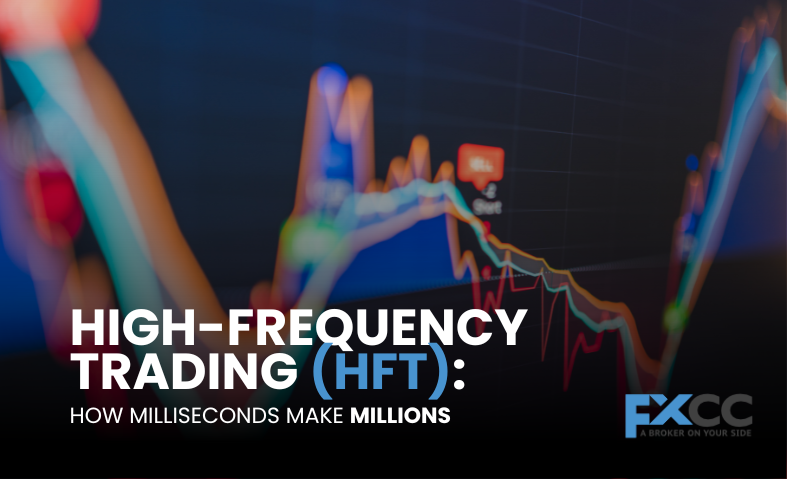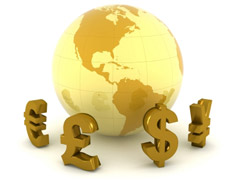High-Frequency Trading (HFT) is a powerful and controversial method of trading in financial markets. It involves using advanced computers and algorithms to execute thousands of trades in just milliseconds. Unlike traditional trading, where decisions are made by humans and take time, HFT relies on automation, speed, and efficiency. This has allowed firms to make millions by taking advantage of tiny price movements that occur within fractions of a second.

How High-Frequency Trading Works
HFT firms operate by analyzing market data at incredibly high speeds. They use powerful computers that scan stock prices, trading volumes, and patterns across different exchanges. These machines identify profitable opportunities and execute trades faster than a human can blink. Since prices fluctuate constantly, even a small price difference can be enough for an HFT firm to make a profit.
The key to HFT is minimizing latency, or the time it takes to send and execute an order. To achieve this, firms place their servers close to stock exchange data centers, reducing the time it takes for information to travel. Some even use microwave signals instead of traditional fiber-optic cables to send data faster. The goal is simple: execute trades before others can react, securing small profits that add up over millions of transactions.
The Importance of Speed in Trading
In HFT, milliseconds matter. A slight delay in processing data or executing an order can mean losing a trade to a faster competitor. The financial markets operate on an ultra-fast scale, where automated systems compete to buy and sell assets instantly. Even a one-millisecond advantage can result in millions of dollars in additional profits for a trading firm.
To stay ahead, HFT firms invest in cutting-edge technology. They continuously improve their software and hardware to reduce response times. Some even go to the extent of laying special high-speed internet cables between major financial hubs like New York and London to shave off microseconds. This technological race ensures that only the fastest traders survive in the HFT space.
Advantages and Risks of High-Frequency Trading
HFT has transformed financial markets in several ways. One major advantage is increased liquidity. By placing a large number of buy and sell orders, HFT firms help ensure that markets have enough activity, making it easier for other investors to trade. This also helps narrow the difference between buying and selling prices, reducing transaction costs for everyone.
However, there are significant risks and controversies surrounding HFT. One major concern is market instability. Because HFT systems rely on algorithms that react instantly to market conditions, a small error can lead to massive sell-offs or sudden price jumps. A famous example is the 2010 “Flash Crash,” where the U.S. stock market plunged nearly 1,000 points within minutes due to automated trading. Such incidents raise concerns about whether HFT firms could accidentally trigger financial crises.
Another criticism is that HFT gives an unfair advantage to large firms with expensive technology. Retail traders and traditional investors cannot compete with the speed and efficiency of automated systems. Some argue that this creates an uneven playing field, where only those with the best computers and fastest connections can succeed. Additionally, certain HFT strategies, such as “spoofing” (placing fake orders to manipulate prices), have been banned due to their manipulative nature.
Regulations and the Future of HFT
To control the risks associated with HFT, regulators have implemented several measures. One key rule is the introduction of “circuit breakers,” which temporarily halt trading when the market experiences extreme price swings. This prevents sudden crashes caused by automated trading. Regulators also require HFT firms to disclose their trading strategies and limit the number of orders they can place to prevent market manipulation.
Despite concerns, HFT is not going away. Technology continues to advance, and financial markets are becoming even faster. While stricter regulations may limit certain practices, firms will always seek new ways to gain an edge. The challenge for regulators is to strike a balance between allowing innovation and ensuring that markets remain fair and stable for all participants.

High-Frequency Trading is a modern financial strategy where speed determines success. It has revolutionized the way stocks, currencies, and commodities are traded, allowing firms to make huge profits in microseconds. However, it also brings risks, including market volatility and unfair advantages for well-funded firms. While HFT is not without controversy, it remains a dominant force in global finance. As technology continues to evolve, the debate over HFT’s benefits and risks will likely continue. What is certain, though, is that in the world of high-frequency trading, every millisecond counts.


